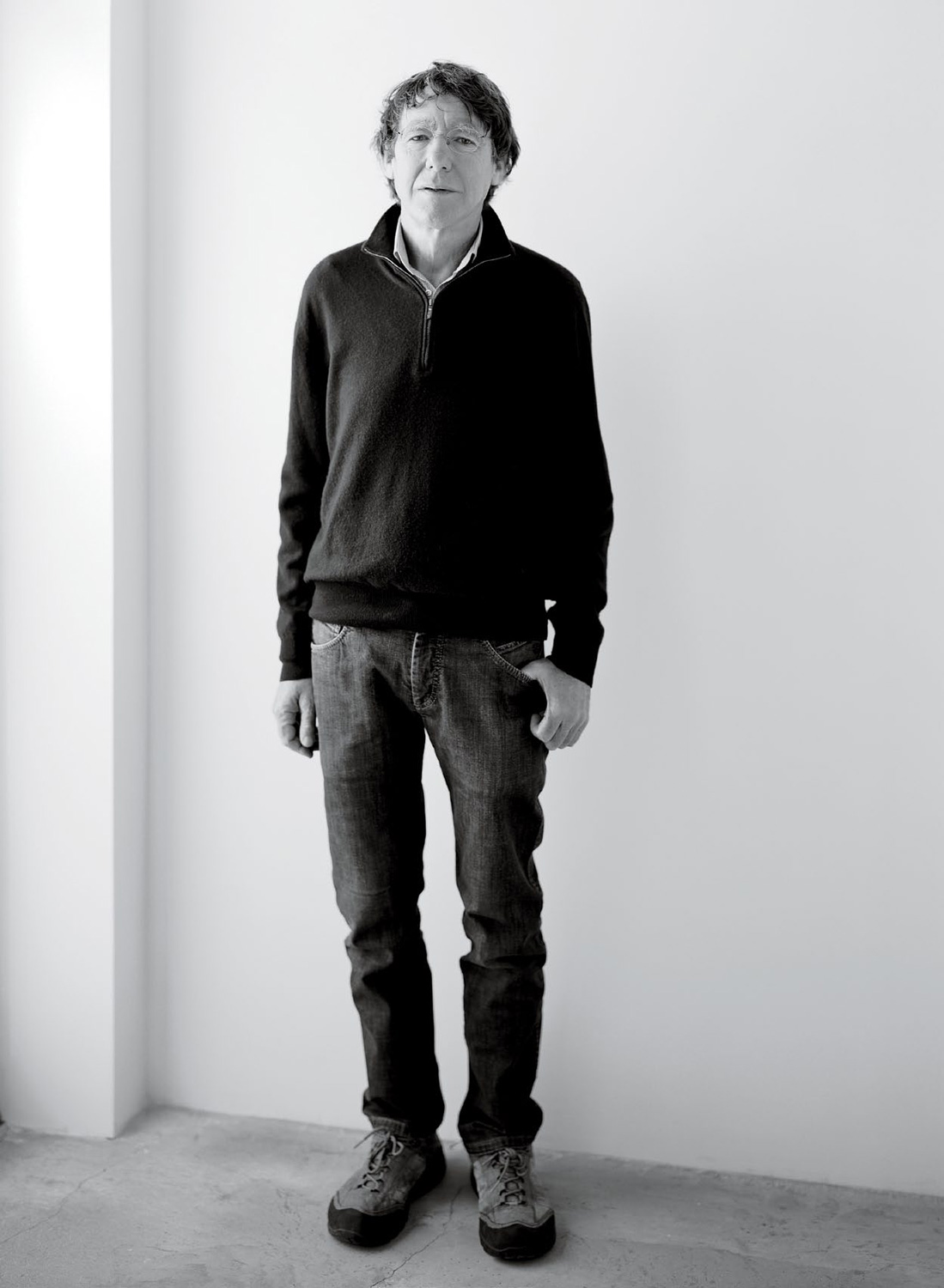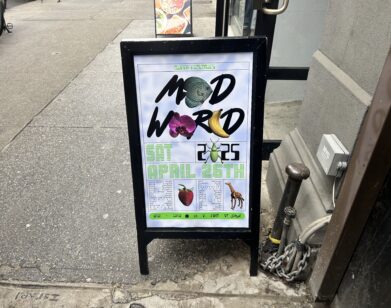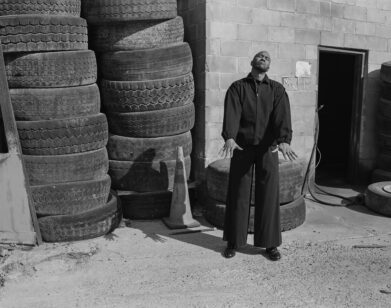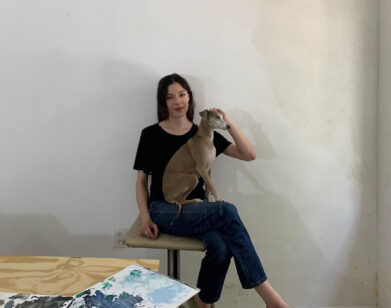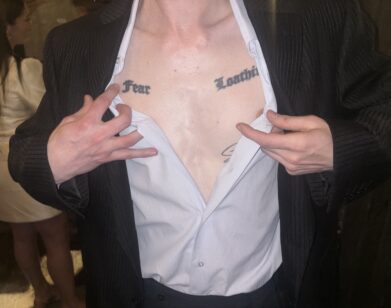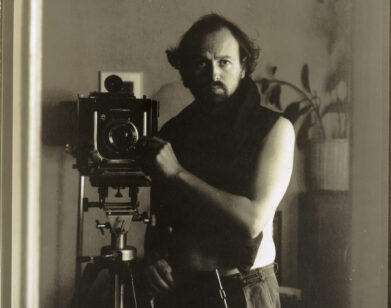Charles Ray
I do what I can do or I follow my interest. I’ll use anything I can, but I have to be first interested in it.-Charles Ray
To say that Charles Ray is an unusual artist would seem—at first glance—a tautology. After all, aren’t all artists meant to be unusual? Don’t they strive to be away from the flock, leaving the rest sheepishly behind to graze on conformity? Well, yes—and, emphatically, no. It’s true that many artists affect a certain eccentricity—of manner, of appearance, of habits even—and it’s also true that these affectations may or may not relate to what they actually produce. But to be a truly unusual artist is to be a case still further apart. Artists may work in different media, they may embrace different styles throughout their careers—so as to contrive distinct periods—but what they very seldom do is what Charles Ray does, which is to rethink the entire basis of what it is to make a work of art each and every time he does so. What follows from this—which, surely, is still more freakishly unusual—is that Ray repurposes himself into a wholly new kind of artist each time he commences. It’s this willingness to risk it all on the throw of the inspirational dice—and these are big risks, because while Ray’s ideas may glissade, his works usually evolve at a glacial pace—that marks him out not only from the commonality of humankind, but from the run of artists as well. A student of sculptor Roland Brener at the University of Iowa in the early 1970s, Ray was trained not to think about sculptures, but to think “sculpturally.” By this I take it he means: with his entire being focused on the aesthetic articulation of formal properties, both psychic and physical. Ray worked through the heavy metal bashing of such unreconstructed high-modernist sculptors as Anthony Caro and David Smith, to embrace the unbearable lightness of interpolating his works with his own body.
In works such as Plank Piece I-II (1973) and Untitled (1981), Ray used his own body as a vital component of his sculptures—with the former, using a large plank to pinion himself against the gallery wall and, in the latter, positioning his naked and hooded form beneath a curved piece of steel. Other artists have followed this dramatic arc, often through performance work or film. But rather than disappearing into the carceral installation or the deceptive freedom of the wholly conceptual, Ray, at the age of 59, has remained true to his calling as a maker; as adept at carving wood as he is with casting steel, prepared to employ materials as diverse as manmade polymers, liquids of all sorts, and mechanical or electric components for his kinetic works. Nevertheless, his sculptural thinking means that he gives no form of praxis primacy—speaking with me from his Santa Monica studio, he said that he might mold something in clay, analyze it through a computer design program, and then cast it in metal, at each stage suspending his disbelief in the eventual form the work will take. Presumably this is at least indicative of how the stainless-steel figurative works on display this past January at the Matthew Marks Gallery in New York were arrived at.
Some art lovers may be struck by Ray’s distortions of scale, such as Fall ’91 (an almost twice life-size sculpture of a professional-looking middle-aged woman), Firetruck (the massively enlarged child’s toy fire truck that was “parked” outside the Whitney during the 1993 Biennial), or Boy With Frog, from 2009, his vast depiction, in white painted steel, of just that: a boy holding a frog above the Grand Canal in Venice. Others may be taken by his works’ shock value. There’s Oh! Charley, Charley, Charley… (1992), a collection of Ray-like mutually pleasuring life-size naked mannequins, and Yes (1990) and No (1992), his in-your-face self-portraits that encode psychotropic perception as photographic representation. Then again, there are Ray works that seduce their viewers with their silkily kinaesthetic subtleties. In this class are the celebrated Ink Box (1986) and Ink Line (1987)—the former, a large steel box brimming lustrously with black ink; the latter, a continuous stream of ink falling through the gallery space. His fellow artists, lacking his uncontrollable self-invention, may characterize him as a gadfly (although, subjectively, he is that to them: a botheration as they try to get on with feeding). But I suspect none of this matters to Ray himself. He simply gets on with making art works, not—I’d wager—because he covets their instantiation, but simply because this is his way of being in the world.
I spoke with Ray by phone: As already noted, he was in his Santa Monica studio, which I imagined as pure, sparse, and bright. I was in my South London house, which is dark, cluttered, and fusty.
CHARLES RAY: One reason I thought it would be fun if we spoke is because I understand you enjoy walking.
WILL SELF: Right.
RAY: I get up at 4:30 every morning and walk in the Santa Monica Mountains. Then I come down and have breakfast and walk again a little bit around the city. My mountain walk is more aerobic and my city walk is more about looking at people.
SELF: I did an eight-day circumambulation of Los Angeles a few years ago.
RAY: How was that?
SELF: It was fantastic. Really enjoyable. I flew into LAX and then walked to Watts Towers and then through South Central into downtown and then out on the Miracle Mile to Hollywood. I planned quite carefully and didn’t set foot in a wheeled vehicle the whole time I was in LA. I only saw people doing what I was doing—what I consider long-distance urban walking—twice. One guy had his driver’s license revoked and he was walking down Laurel Canyon Boulevard, and another guy was near your studio walking across the Ballona Wetlands. He said he walked every day from his house in Playa del Rey to Venice and back.
RAY: There used to be a gentleman called the Walking Man. He was kind of mythic, and he walked all over the Echo Park-Silver Lake area. He always had on gym shorts, tennis shoes, and no shirt, and he had a newspaper under his arm.
SELF: This could have been the guy I ran into.
RAY: He died recently. There was an article on him, and it turned out that he had been a doctor and was involved in some police investigation over prescription drugs or something. He was never proven guilty, but he was just a shade on the other side of the law. I may have the story wrong. But in my imagination, I always saw him almost as a Giacometti figure.
SELF: It seems to me that the man was expiating his conscience by walking. That’s quite powerful.
RAY: That could be. I worry too sometimes that people see me as a Walking Man because I’m out on the same road almost every day. It’s like if you ever notice a unique or weird car, you start seeing it over and over again, and then you realize you actually see all the cars over and over again, they just look similar so you don’t notice. There are a few walkers around and I see them quite a lot when I’m driving to my studio.
SELF: Do you think of walking as part of your art practice? I know in the past you sailed a lot and have spoken about sailing as being analogous to an artistic practice.
RAY: I think walking is a little more primal than art-making. I do it also for my health. And I like what it brings me in terms of thought.
SELF: There is a line from Rousseau’s Reveries of the Solitary Walker that’s something like, “We think at a walking pace.” I certainly agree with that. I wonder, you’ve been in LA for a long time. Is the city very important to you?
RAY: I think as a place it is, but in a really abstract way. I’m a little bit of a loner, so there’s a part of it—the insides and social spheres—that I don’t pay much attention to. But as a place, yes. I’m outside a lot.
SELF: I’m essentially a solitary person as well. What I find is that being in a city allows me to experience lived lives without the kind of boredom of social interaction. I think the critic Robert Adams said of Los Angeles, “Everything they say about it is true.” Is the polymorphous perversity of LA important to you?
RAY: It’s more special to me geographically than urban-ly, in a way. That’s a weird thing to say because you can’t really remove the two from each other, but I’m not wild about it or continually amazed by it or anything like that.
SELF: Of course, it seems to me, the way you remove the two in Los Angeles is just by walking. If you walk any distance, you’re removing yourself from the way in which the city is usually perceived—through the windscreen of a car or even on the screen of a computer or video.
RAY: That’s true. You know, where I walk in the morning, I have to be careful of mountain lions and other kinds of wildlife. It’s quite remote and un-urbanlike until I round the bend and see the city and the ocean below me. Those juxtapositions really amaze me. I really appreciate them. When I’m in New York, I get up at the same time every morning and walk the perimeter of Central Park. It’s a much different experience. When I’m in Chicago, I’ll walk the Lakefront—
The beauty of walking alone is that there’s no one to impress. A beautiful observation just is what it is. -Charles Ray
SELF: It seems like you’re defining shapes with these walks. Walking Central Park or walking the Lakefront are very definitive lines, aren’t they?
RAY: When I’m in New York, I usually stay up near the Met and I’ll have business down in Chelsea, and I’ll walk down and walk back. I’ll walk everywhere in New York. And I try to do the same in Chicago. But I was born in Chicago. I’m from there, so there is a different kind of delicate connection I see when I’m outside in that city, because we didn’t drive when we were kids. But even in LA, everything you see and think, and even what you hear when you’re walking, is different. Like bits of cell phone conversations or what people are saying three feet behind you or the strange interactions you have. I was getting an espresso a couple of months ago and this guy said, “Are you going to see the shuttle come in?” Turns out that day the shuttle was flying into Los Angeles, piggybacked on a 747, on the way to its final destination, the California Science Center. This isn’t something I normally do, but I took a walk over to the beach and there were hundreds of people out to see it. It flew over the beach before going over the Hollywood sign and over Griffith Park.
SELF: They did the same thing with the Concorde in London. They flew it around the city before parking it for the last time. It’s almost like they’re placing it in a context before they mothball it.
RAY: Do you walk in London a lot?
SELF: Yep. I’ve been walking today. I have a job at a university out towards Heathrow Airport, so I’ll take the over-ground train out there and then walk the last few miles, just in order to clear my head. I live fairly centrally in London, so I can walk to most places in the ordinary course of things.
RAY: The hunter-gatherer walked something like seven or eight miles a day.
SELF: I enjoy doing very high mileages, partly out of masochism and also because I like to feel the shape of the landscape. That’s the point at which it starts to become an experience of the sculptural or the topographic—when you do 25 or 30 miles in a day.
RAY: I haven’t done that. I’ve had fantasies in the past of walking across America or some great distance, but it’s such a commitment of time that it’s stopped me.
SELF: You have the commitment of your studio and your work. Do you want to talk about that?
RAY: I do a lot of thinking about my work while I’m walking. More in the early morning when I’m trekking in the mountains. When I’m walking in the city, I think more about people around me—my brothers, my wife, some business situation, commitments. But walking in the early morning has affected my work. It’s more allowing a meditative, contemplative process into it. You know, work for me has always taken a long time. But in recent years I’ve used time to make work rather than taken the time. Maybe you know what I mean. It’s the same with walking.
SELF: You can’t rush walking. Once you get into it, as a discipline, you also have to accept that your thinking will inevitably follow its own course. Maybe something will come out of it and maybe it won’t. Maybe you’ll get some kind of dreadful earworm of a pop song running through your head that you can’t shake, or maybe some resentment will surface and you’ll just be obsessed by that, but you can’t really do anything about it, and that acceptance is very calming in a way.
RAY: It’s like sailing in that way.
SELF: How does a constructive thought concerning your artistic practice come to you?
RAY: In walking, it’s never in a “eureka” kind of thing. It’s never, “Oh, I know what I will do.” It’s more like, “Oh, let’s follow this river or this stream.” Or, “Let’s plant this seed.” It’s never a solution. It’s never, “I’ll go back and make a sculpture of this or a picture of that.” It’s more of a gentle approach.
SELF: Do you think about materials?
RAY: I think about materials, but not like, “Let’s roll up our sleeves and start thinking about them.” Maybe I’ll think a little about time or different aspects of a tone of space or what my relationship is to it. It’s like when something takes a long time to look at. Why am I enjoying looking at this aspect of a sculpture? Where does it come from? A few years ago I was walking in Chicago after my father passed away. He was a very strong figure for me. I was walking along the Lakefront between McCormick Place and the Hancock. And I had grown up watching them build the Hancock when I was a little kid. It was near where my dad and grandmother had their offices. But this walk I took was on a cold February morning, and I remember I couldn’t separate my father from the building. It was that kind of feeling that happens on a walk for me. It’s not hallucinogenic or super-poetic. It’s more personal. The beauty of walking alone is that there’s no one to impress. A beautiful observation just is what it is. I remember thinking this about my father, and I was thinking I should get an apartment there where my wife and I can stay. Then one of my next thoughts was about going to the airport on Monday morning back to California. [laughs] The thought ended that quickly. And there’s nothing wrong with that because I was alone. I’m thinking about my father and my youth, looking at what was around me, walking. It was a beautiful moment, but almost kind of unsharable.
SELF: [Blasting sound through Self’s phone] You can probably hear the fireworks going off in the background. On November the fifth, every year in this country, they make an effigy of a man called Guy Fawkes.
RAY: Didn’t he try to burn the Parliament down?
SELF: He tried to blow it up. He was discovered with large quantities of gunpowder in the cellars of the Parliament. He was a Catholic, the government were Protestants. He was hanged, drawn and quartered, and such is the queer savagery of history that it goes on annually on the same date 400 years later.
RAY: But today is the 21st. It’s still going on a half a month after the anniversary?
SELF: It’s all an excuse for letting off a firework. But getting back to what you were saying about your father. I walked a lot with my father and I also think you discover your same-sex parents through your physicality a lot, because, in time, you come to resemble them. My father died over 10 years ago but I still keep discovering aspects of his physicality when I’m walking.
RAY: I know what you’re saying. I’ll see it sometimes when I see a photograph of myself. I say, “Jesus Christ, I hold my hand just the way he did.”
SELF: My father was already in his forties when I was born, and he died when I was 38, so I got to know him after he died through my body. I started to recognize his presence from my own childhood in my own physicality.
RAY: Yes. I feel I can feel my father’s stoop in myself.
SELF: Did you get on well with him?
RAY: Yes and no. He was very powerful for me and I was a little suspect in his eyes. I do think he was always very proud of me.
SELF: My father used to say that we should be rivals, that we should be in dispute with each other.
RAY: Was he a writer?
SELF: He was an academic. A political scientist. But he had a literary bend as well.
RAY: When you teach, do you teach writing or political science?
SELF: I teach walking, actually. I’ve just started on a course on what we call psychogeography. You’ve been a teacher and mentor to many artists for a long time now. Is teaching important to you?
RAY: I came to California in 1981 for a teaching position at UCLA. It was a good place to teach because they considered art as they did any other field. It was a research institution, so there was a lot of time where the teaching load was rather light, and part of the position was being a professional in your own field. I think I’ve matured a little bit in how I teach and how I think of teaching. I only teach half-time now, but lessons I’ve learned from teaching have actually impacted my own work in the studio. There’s become a lot of patience in something that could take three years to make or four years or 10 years. And not everything that starts gets finished. And each different piece goes through many different hands and materials. It’s sort of allowing things to go on even when they don’t seem to be productive and seeing where this is headed. I think the ability to do that without worrying came from teaching.
SELF: Is that because students don’t respond to a formalist approach?
RAY: Yes, but also you can step back and wonder as you grow a little bit if what you’re really doing is teaching everyone to make your work in some kind of bizarre way. It’s really hard to break from that.
SELF: Your teachers were very influential to you, right?
RAY: Super-important. But it’s a very murky thing, teaching. I didn’t feel it then, but from my experience, good teaching is super-bloody, and almost verges on being illegal today. I don’t mean abuse in any way, or beating students with a stick. It’s more that the relationship I had with my teacher was super-personal and super-intense and emotionally colored. I got a lot from him and took a lot from him, and he took from me as well. That kind of taking isn’t allowed anymore—mentally and artistically and emotionally. He was, at times, so difficult and critical and nasty to me. And it was personal. The work and the attitude about the work were being criticized in front of me. But it was like a tumor. The roots were deep in me. The criticism was so important. Good criticism always has a ring of truth to it, you know? I could try to work with it and correct it, and I think that really shocked my mentor.
SELF: It sounds like he was tempering you like you might temper steel.
RAY: It wasn’t like hardening up in the military, because I never hardened. It was more about how to see in order to survive. It was not to think about sculpture—which is what they taught in the university—but to think sculpturally. That’s what I learned to do. Anyway, what I mean is that it was a very powerful relationship between mentor and student and you don’t really see that so much anymore.
SELF: The experience is just too overpowering to be contained in the university context now.
RAY: You’d get in trouble.
There’s something super-modern about making something by hand. I think people don’t always want the look that something is built in a computer. -Charles Ray
SELF: You’re looking for a visceral, intuitive response of some kind, and that’s just not going to get covered by grading systems. Have you had students you’ve felt a powerful reaction toward, as you did with your mentor?
RAY: Yeah, I think so. But I’ve been shocked with people who have come up to me who I didn’t really remember who mentioned something I said—or that they’re still angry with me 20 years later at something I said.
SELF: They’ve been walking around for 20 years chewing over it in their minds.
RAY: If they’d been out every day walking, they would have walked it off! I find that happens with me. I’ve been really careful when I walk in the city that I don’t get into a fight. Not that there are fistfights or mayhem all around me. But I’ve slowly been learning not to get pissed off when something starts to burn in me. I had the weirdest thought today. I’m sure it’s not mine alone, but it’s the ubiquity of the media and cell phone texting. Somewhere between 70 to 90 percent of the people I pass while I’m walking are texting or talking on their cell phone. There’s no engagement.
SELF: They are not actually where they are physically anymore. I was thinking today about how in the past, having drug scenes in the street was a fixture. In a way, the cell phone has removed drug culture from the streets, or translocated it. A lot of behaviors are no longer part of the context of street life.
RAY: Another thing I thought today was that in my area of the city there are a lot of homeless people. Santa Monica is not unfriendly to homeless people. What I mean is that they don’t hurry them over to the next town. If homeless people behave, they’re left alone to sleep in certain parks and not be shooed away. I pass my fair share of people talking to themselves while walking down the street, like a bottled behaviorism, and then the people on the cell phone talking to themselves. Obviously it’s not the same situation, but I was wondering, behaviorally, if it’s the same effect. The homeless person or the schizophrenic person talking to themselves are disassociated from their immediate environment. They’re off in a fantasy, and it’s very similar to what happens on a cell phone.
SELF: I couldn’t agree with you more. I remember flying to Sweden in the ’90s, before there were hands-free sets for cell phones in England. I landed in the airport in Stockholm and saw these middle-aged businessmen wandering around the terminal talking to themselves. I couldn’t even see a cell phone. I thought, “This is schizophrenia. It’s a form of electronically produced schizophrenia.”
RAY: Yeah, it’s amazing.
SELF: Also, when people drive now, they’re looking at their satellite systems so they’re not even concentrating on the windscreen anymore, they’re concentrating on a video screen within the car.
RAY: And now the windscreen is getting to be like a jet-fighter’s screen. The Audi has a feature where it will pick up a pedestrian on the windscreen and map its silhouette so you’re aware of a dangerous object ahead of you.
SELF: That’s a very compelling thing, the virtualization of real perception. It seems to me a paradigm shift. Looking back over your work, one of the things that occurred to me was a quotation from Lévi-Strauss’s The Savage Mind. He writes: “The intrinsic value of a small-scale model is that it compensates for the renunciation of sensible dimensions by the acquisition of intelligible dimensions.” That’s what the Audi windscreen is doing. Arguably it’s what some of your pieces do as well.
RAY: Yeah.
SELF: Although, in the case of the Audi windscreen, it seems much more sinister. In your case, it’s an artwork, it’s provocation. Often you’ve changed the scale or material or altered the dimensionality so subtly that the viewer isn’t sure what has changed. Sometimes it’s very overt. But the witness to the work is asked whether they want to enter into that. With the Audi screen, it’s essentially imposing it on you as a condition moving through space. Maybe it’s only worrying because we are getting older. [laughs] Should we just embrace it?
RAY: I don’t know. The Audi windscreen intrigues me. All gadgets intrigue me. I have to say I’ve trained myself on my urban walks not to use my iPhone. I bring it, but I do not use it; I don’t look at the time or check e-mail while I’m in the shade or at a stoplight. It’s difficult, but in the end, all gadgets are intriguing toys.
SELF: I resisted the iPhone until July of last year. Now I’ve embraced it. But I think it’s different for writers because we’ve clearly entered a period in which the analog of text is no longer important or relevant. All text will be electronic. I accept that fact. My house has thousands of books in it, and I’ve started to look at them completely differently in the last few months. They now seem to me to be like antiquarian objects.
RAY: They feel more object-like.
SELF: Totally object-like. Their use value has become negligible to me because I’m perfectly happy to read on an e-reader.
RAY: One of my favorite artists is Daniel Defoe. I’ve always been in awe of his relationship to technology—how the printing process affected writing, how he was able to use the everyday vernacular after being a pamphlet writer, and all the other things he did in his life. But it seems that Robinson Crusoe could have been written without that technology. I think we haven’t really worked out what’s going to happen to us in terms of writing, and how it will change in the near future.
SELF: We’re in an interregnum between two modes of production, and we don’t know what is going to emerge. But we’ve already grappled with a lot of similar questions in art-technological reproducibility, the duplication of artworks. It started with the invention of photography. And a big problem with sculpture is, in some capacity, being able to mass-produce objects. You’ve dealt with that and so have other artists in a notable way. You’ve responded by rolling with that punch—integrating it into your practice through conceptualism or kinetic art or videos and installation. Therefore electronic media and the web don’t appear to me to be such a threat to you.
RAY: No, I don’t find them a threat at all. I feel a bit outside of the mainstream. I’m losing track of exactly where we are, but the media has always just been a means to something else.
SELF: Right. For example, you wouldn’t feel tempted to start producing computer art. You’re sticking with your original direction.
RAY: No, I wouldn’t do that at all. But we use a computer all the time as a tool; work that, in the last number of years, goes in and out of a computer while we’re making it. An object can be scanned, be put into the computer, and then printed or created in another material and then worked by hand on it again. A figurative artwork for me can go from clay to plaster. Clay has a much different quality than plaster when it’s being worked. What happens when a work’s in the computer is akin to that. Clay, plaster, virtual clay—they move differently and have different kinds of uses. There isn’t any way one shouldn’t work.
SELF: No, but it strikes me as important to get your hands dirty.
RAY: No. If it happened without my getting my hands dirty, that would be okay. These days a lot of design is perhaps too dependent on the computer alone. Everything looks like a tennis shoe, like my new pair of Nikes—a boat, a car.
SELF: I noticed that about 10 years ago—cars started to look like tennis shoes. What is that about?
RAY: There’s something super-modern about making something by hand. I think people don’t always want the look that something is built in a computer. There is something modern with dealing with something haptic or of the moment.
SELF: A lot of your work subverts the manufacturing process quite powerfully by either using materials of great weight and density—such as your most recent steel figures that are being shown at Matthew Marks Gallery in New York City—or finishes that would be unachievable except through the production of a single work, like the tree you laboriously purloined and then replicated [Hinoki, 2007]. Is that something you consciously engage with or is that just the way you want to make it?
RAY: It’s just the way it comes out. It’s just the way it is… [pauses] I don’t want you to think I’m being resistant to giving you answers.
SELF: What stands out for me when reading materials related to your work is a steely determination to resist a lot of art-critical discourse on your part.
RAY: Well, yeah, I resist, but I don’t think it’s even a conscious resistance. I do what I can do or I follow my interest. I don’t mean to say, “Oh, my ideas are so original, I don’t follow any discourse.” I’ll use anything I can, but I have to be first interested in it. The important aspects of it are always much different than the subject of the work.
SELF: William Empson described some piece of art-critical writing as “a steady iron-hard jet of absolutely total nonsense.”
RAY: Nonsense? Yeah. A lot of everything is pretty nonsensical. Someone told me they were at a dinner with [Governor] Jerry Brown, and someone said, “God, this is such nonsense.” And he turned and said, “It’s all nonsense.” [laughs]
SELF: I suppose you’re right. I don’t mean to single out art criticism. Maybe because it seems to me that a lot of art criticism closes its reader off from experiencing the works of art it is discussing in many different ways—which is the point of art. And so much critical discourse is working directly against that intention. But I would like to ask you about the making of one piece in particular—about the use of LSD in the production of Yes and No. Did you use it a lot then? Did you feel it gave you valuable insights at the time?
RAY: Yes and No are two separate works. No came a few years later, in 1992. The photo used in Yes was a photo taken of me on LSD standing in front of the same gallery wall where the work was to be hung. This portrait was taken as per my written instructions before I took the LSD and well before I altered the wall itself. The physical structure of the work will perhaps explain my intent: A photo of me is taken while I am on LSD. A glass manufacturer put a bend into the glass that was used in the framing of the photo. The photo is life-size. A frame maker carved a simple wood frame to match the curve of the glass. A builder built a new wall in the gallery. This wall had a curve from floor to ceiling. The curve, or swelling of the wall, matched what I was experiencing from the hallucinogenic drug. The portrait and its curved glass frame and photo were hung and fit the curve of the wall perfectly. Entering the room, everything looked fine. The interest was in the peripheral vision where the curve of my wall met the straight, unaltered walls of the gallery architecture. The room seemed to breathe at the periphery of the viewer’s vision—a place where interesting events seem to occur, the pictorial space of the work into the lived space of the viewer. I titled the work Yes in reference to Nancy Reagan’s “Just Say No” program, which was somewhat concurrent with the time of my project. At the time it seemed to me that a hallucination was affirmative. You say “Yes!” to the burning bush. This thought was perhaps what led me to No. No is about an infinite regress. The impossibility of art to push a subjective state out into the world. My self-portrait in No is a plastic sculpture of me. I brought the sculpture to a photo portrait studio and asked the photographer to take a portrait of it, treating it as if it was a normal subject he would encounter in the course of his workday. My idea being that once you moved through the artifice of the photo genre—with backdrop, film stock, lights, etc.—you would still not reach me there in the photo being another artifice of me. As an ancient philosopher explained: “It’s turtles all the way down.” I took drugs when I was young. Being a teenager in the late ’60s, I found the mind-expanding experiences so body-felt in drug usage. They’re a sculptural link between the mental and the physical. A few often republished quotes attributed to me concerning drugs are actually from a fictitious interview that Dennis Cooper wrote in the early ’90s. I enjoy coming across this and other information from that particular interview.
SELF: Okay, we may have said enough.
RAY: When you come to LA, we should take a walk together. It would be really fun.
Will Self is a British novelist and journalist. His latest book, Umbrella, was released in January.

